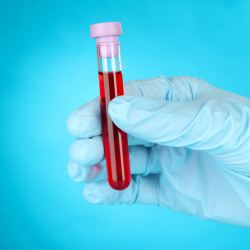In a world where optics, buzzwords and marketing magic carry as much meaning if not more than — it seems— the actual validity of the core concept or technology, nothing baffles me more than how a Theranos was able to rise and fall so precipitously and garner a multi-billion dollar valuation. Or, raise such capital at all from the start.
Fundamentally, the company’s promise of “groundbreaking finger-stick technology" was the reinvention or rebranding of an existing technology: the microtainer (aka the pediatric bullet). I will get to that shortly.
The power of marketing or a good story that can sell is likely what eludes most doctors and scientists, since we tend to root our opinions in evidence and facts. Ones that can be reproducible with exact descriptions, disregarding over or under selling. Simply specific and measured in tone. This may not be the sexiest of approaches, but it is the honest one.
Reinventing the wheel should raise alarm bells for most and prompt investigation and review of data well beyond marketing materials. Data with large sample sizes. Data that is useful and run against an effective control.
Elizabeth Holmes, the former darling of Silicon Valley, came on the scene with her start-up company, Theranos, that was to revolutionize and disrupt the blood collection industry. She dropped out of Stanford to pursue this passion purportedly based on a fear of needles. As a result, she released the “nanotainer” a black top tube described as a “proprietary technology” along with Edison machines that could interpret these very small collection tubes based on a “few drops of blood.”
She had an illustrious board, graced covers of major magazines, spoke center stage on many platforms and international forums, and topped Forbes list of self-made billionaire women. Ultimately stripped of this title and given a newer valuation of zero, the house of cards came crumbling after the cloak and dagger nature of how the firm did business and the gross inaccuracies of their lab results and innovation claims catapulted Theranos into mainstream media attention. Being the subject of federal investigation followed.
As a consequence, thousands of lab results were invalidated. And, investigations are underway along with dissolution of partnerships like Walgreen’s and so forth.
What is rarely discussed is the fact that those innumerable cancelled tests tremendously impact human lives. Doctors make medical decisions and treatment plans based on those lab values— precision is essential to this high stakes industry.
There are legitimate reasons why the blood collection and testing techniques have remained relatively stagnant over the years. There are challenges to how samples are obtained and the accuracy of the data run based on limitations of specimen collecting itself, the actual transport medium to processing and its temporal requirements, for instance.
But, to use terms like “groundbreaking” and “revolutionizing” irritates me to no end. Few things really are. The microtainer or pediatric bullet is a tiny vial that dates back well before I was a resident and appears in 1976 in Clinical Chemistry in a work entitled Evaluation of a New Blood-Collecting Device ("Microtainer") That is Suited for Pediatric Use.
These small tubes are utilized at present and for many, many years routinely in neonatal intensive care units to pediatric floors to various hospital settings where less blood needs to be drawn to spare a profoundly anemic patient, for example.
They permit a number of lab tests to be performed without depleting a patient of significant blood volumes. For obvious reasons, this can be critical when dealing with an extremely premature infant. The tubes are filled by a dripping method after finger or heelstick. When blood is obtained by capillaries or veins, in general, there can be variation in results. The goal is clearly to maintain consistency between these two specimen forms so as to render the microtainer outcomes of value.
The microtainers can be essential to those who require frequent blood draws and are a difficult stick or need less blood taken at a time. Many tests can successfully be performed with this technology that can guide a physician’s treatment plan. When a specimen is hemolyzed or clotted, the results get rejected or can’t be determined and there are times a central stick becomes inevitable. Additionally, these can be assessed in existing machines already in use in hospitals and laboratories throughout the country. No special machine needs to be purchased.
Why raise this issue now? Because another phlebotomy device and company is hitting the presses touting to be virtually pain free and transportable. One article referred to it as a “needleless” system which is erroneous given it is composed of thirty tiny needles. It is early in its approval and testing process, but its potential is being reverberated. Hopefully, it will ultimately evolve to fulfill its promise, but systematic proof will be vital early and often along the way before I would ever champion use in people.
In conclusion….
Revolutionary would be collecting blood without a needle. That would be disruptive.
Take Home Messages
- If it seems too good to be true, then it usually is
- If it has a needle, then it is unlikely NEW and Groundbreaking. A needle is a needle, sometimes larger, sometimes smaller.
- If something or someone is the real deal, then it or they will readily reveal their data, desire to improve and defend their work and not hide behind impressive adjectives
- Be wary of these buzzwords: proprietary, revolutionary, groundbreaking, disruptive, world-renown titles
- Never assume due diligence has been done based on famous Board Members or “world-renowned” institutions. Do your homework—ALWAYS.
- Innovations in this industry are worthwhile and big dreams when realized can certainly serve to change health care delivery and compliance.
- Most advances, however, are improvements of prior iterations. Novel is often a unicorn — possible, but less common.
Notes:
Please click on the links in blue within this piece to learn more about the microtainer (aka pediatric bullet) and nanotainer.

